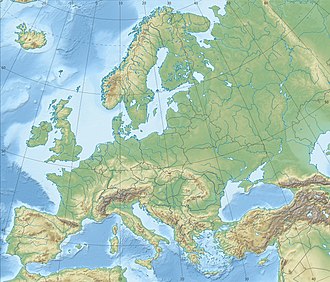| Battle of Altenburg | |||||||
|---|---|---|---|---|---|---|---|
| Part of the German campaign of the Sixth Coalition | |||||||
 Battle of Altenburg engraved by Ant. Tessaro | |||||||
| |||||||
| Belligerents | |||||||
| Commanders and leaders | |||||||
| Thielmann Mensdorff Platov | Charles Lefebvre-Desnouettes | ||||||
| Strength | |||||||
| Unknown | 8,000 [1] | ||||||
| Casualties and losses | |||||||
| 300 dead or wounded [1] | 600 dead or wounded [1] 1,000 [2] –1,400 [1] taken prisoner | ||||||
Location within Europe | |||||||
The raid at Altenburg on 28 September 1813 took place during the War of the Sixth Coalition's German Campaign of 1813. [3] The raid was carried out by the Streifkorp under the command of Saxon General Johann von Thielmann commanding seven regiments of Cossacks, a squadron each of Saxon Hussars and Dragoons, and a detachment of Saxon Freikorps numbering about 1,500 cavalry. The objective of the raid was to attempt harassment of the French lines of communication 25 miles (45 km) south of Leipzig shortly before the Battle of Leipzig. The Austrian contingent was commanded by Emmanuel Mensdorff and the Russian contingent of Cossacks by Matvei Platov. [2] [4]

